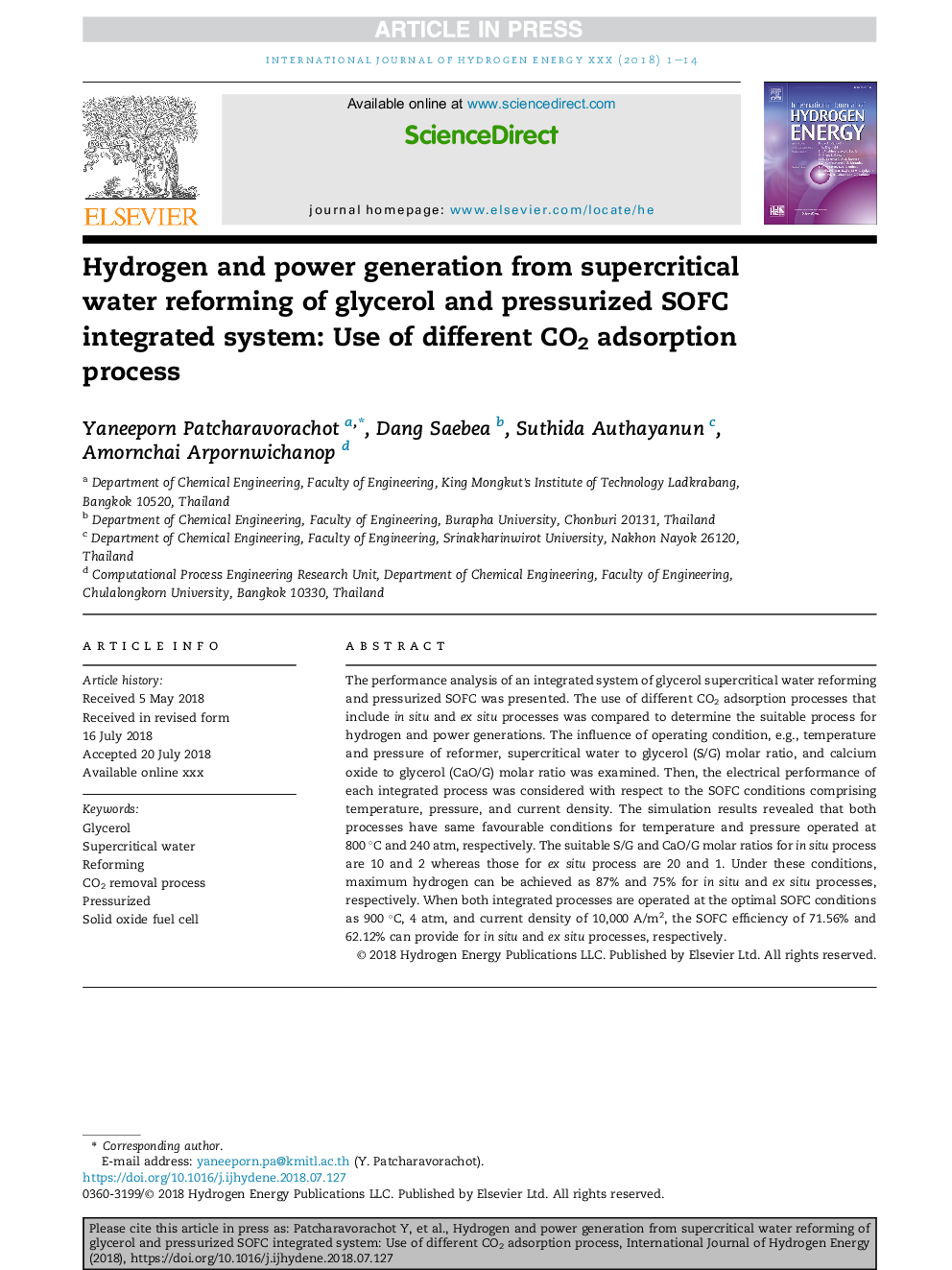| Article ID | Journal | Published Year | Pages | File Type |
|---|---|---|---|---|
| 8954949 | International Journal of Hydrogen Energy | 2018 | 14 Pages |
Abstract
The performance analysis of an integrated system of glycerol supercritical water reforming and pressurized SOFC was presented. The use of different CO2 adsorption processes that include in situ and ex situ processes was compared to determine the suitable process for hydrogen and power generations. The influence of operating condition, e.g., temperature and pressure of reformer, supercritical water to glycerol (S/G) molar ratio, and calcium oxide to glycerol (CaO/G) molar ratio was examined. Then, the electrical performance of each integrated process was considered with respect to the SOFC conditions comprising temperature, pressure, and current density. The simulation results revealed that both processes have same favourable conditions for temperature and pressure operated at 800 °C and 240 atm, respectively. The suitable S/G and CaO/G molar ratios for in situ process are 10 and 2 whereas those for ex situ process are 20 and 1. Under these conditions, maximum hydrogen can be achieved as 87% and 75% for in situ and ex situ processes, respectively. When both integrated processes are operated at the optimal SOFC conditions as 900 °C, 4 atm, and current density of 10,000 A/m2, the SOFC efficiency of 71.56% and 62.12% can provide for in situ and ex situ processes, respectively.
Related Topics
Physical Sciences and Engineering
Chemistry
Electrochemistry
Authors
Yaneeporn Patcharavorachot, Dang Saebea, Suthida Authayanun, Amornchai Arpornwichanop,
